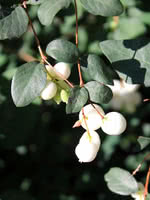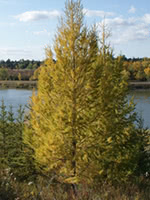Mon-Fri 9am - 5pm Mountain time
Western Snowberry vs Siberian Larch Oasis
Symphoricarpos occidentalis
Larix sibirica Oasis
NOT AVAILABLE THIS SEASON - MIGHT RETURN
NOT AVAILABLE THIS SEASON - MIGHT RETURN
Like the Common Snowberry, the Western Snowberry is a small shrub with pink flowers useful for feeding livestock and preventing erosion. Unlike the common species, however, the Western Snowberry is much more suited to wet conditions, capable of persevering through poor soil drainage and occasional flooding.
After the Snowberry's flowers have bloomed, it produces berries which often last on the plant through winter. These berries are toxic to humans, but livestock and local wildlife love them! Those hoping to attract wildlife to their property can plant Snowberry and expect to see animals foraging on it much later in the year than other plants.
The Siberian Larch 'Oasis' is perfect for shade in the summer and sunlight in the winter as it drops its needles in the fall. A dense deciduous conifer tree with an attractive oval shape and a strong central leader, this larch is perfect in a shelterbelt for protection in the summer and sunlight in the winter. The delicate and fine needle texture that makes it an attractive feature in landscaping projects and is show-stopping in the fall with foliage that turns gold.
Western Snowberry Quick Facts
Siberian Larch Oasis Quick Facts
Toxicity: berries are toxic to humans

